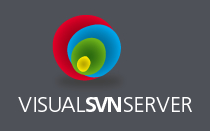

See the image below for the field that needs to be changed. This is accomplished by changing the Repositories: path in the custom setup wizard to a local path such as C:TempSVN. Ignore the network share during installation. This failed because we have explicitly disallowed modifications unless you are the SVN domain account or an administrator… the installer was neither! At least we know the installer works smoothly! After a little bit of digging, it appears the installer is attempting to modify the security settings on the repository files. Our first attempt to install using the default upgrade settings failed with the following error:Ĭustom action ConfigureSecurityExecute failed: Cannot retrieve security information for ‘\Our NAS storage path’: Access is denied. Now on with the story: Upgrading to VisualSVN Server 2.1.1 From a security standpoint, the repository’s file share is locked down to a dedicated SVN active directory account as well as the customary administrative accounts. The repositories themselves are stored on a NAS file server which is located internal to our network and provides a high level of security and recoverability.

Our VisualSVN Server is located on an externally facing edge server which allows access to our SVN server from both sides of the corporate firewall. In the spirit of saving others time, I am going to review our latest installation experience. This has nothing to do with VisualSVN’s implementation, but rather the complexity of our internal network. While the server itself has always been reliable, installation and upgrades have proven to be rather challenging. We continue to rely on the exceptionally stable VisualSVN Server by VisualSVN. As I have blogged about previously, our source code is our lifeblood.


 0 kommentar(er)
0 kommentar(er)
